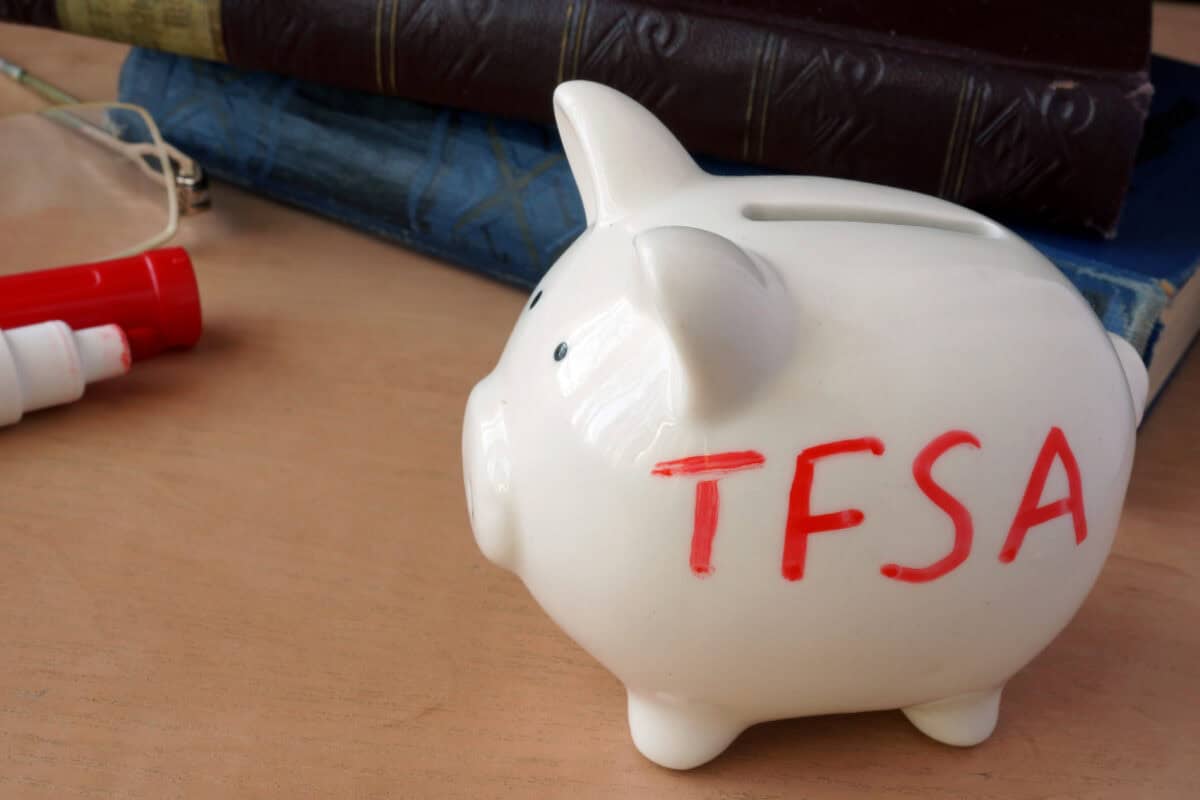The Tax-Free Savings Account (TFSA) was introduced in 2009 to encourage savings among Canadian residents. Any returns generated in this registered account are exempt from taxes, making it popular in the past decade. Moreover, you can hold assets such as stocks, bonds, Guaranteed Investment Certificates (GICs), and mutual funds in the TFSA.
The TFSA contribution room in 2024 has risen to $7,000, raising the total cumulative contribution room to $95,000. Let’s see how you should allocate this amount across asset classes to benefit from diversification and lower risk.
Invest 30% in GICs
Younger investors should consider allocating around 30% of their TFSA contributions toward fixed-income products such as GICs. Here, you deposit money with a bank or financial institution and earn interest on these deposits.
Interest rate hikes since 2022 have meant that several banks now offer a 5% interest rate on GIC deposits, which is higher than the current inflation rate. GICs are ideal for investors with a low-risk appetite and a short-term investment horizon.
So, 30% of $95,000 is $28,500. Investing in GICs can earn you $1,425 in annual interest payments, given a 5% yield.
Invest 50% in dividend ETFs
A majority of your income should be allocated towards equities, especially if your investment horizon is more than 10 years. The best way to invest in stocks is by holding dividend ETFs, or exchange-traded funds, such as iShares Core MSCI Canadian Quality Dividend Index (TSX:XDIV), which offers you a tasty dividend yield of over 4%.
Some of the ETF’s top holdings include blue-chip giants such as Manulife, Royal Bank of Canada, Suncor Energy, Enbridge, and Toronto-Dominion Bank.
The XDIV pays shareholders a monthly dividend. In the last 12 months, it paid shareholders $1.30 per share in cumulative dividends, indicating a trailing yield of 4.85%. An investment of $47,500 in the ETF would help you buy 1,774 shares of the fund and earn $2,340 in annual dividends.
| COMPANY | RECENT PRICE | NUMBER OF SHARES | DIVIDEND/INTEREST | TOTAL PAYOUT | FREQUENCY |
| GICs | NA | NA | $1,425 | $1,425 | Annual |
| XDIV ETF | $26.77 | 1,774 | $0.11 | $195 | Monthly |
| Brookfield Infrastructure | $39.80 | 477 | $0.555 | $265 | Quarterly |
Invest 20% in dividend stocks
Investors can also consider owning shares of undervalued dividend stocks such as Brookfield Infrastructure Partners (TSX:BIP.UN). Today, BIP stock offers you a dividend yield of 5.6% and trades at a steep discount of 21% to consensus price target estimates.
Brookfield Infrastructure operates a portfolio of cash-generating real assets across sectors such as utilities, transport, midstream, and data infrastructure. Around 90% of its earnings are derived from fee-based contracts or rate-regulated structures. Further, 70% of its cash flow is protected from volume or price exposure, and 85% of cash flow is indexed to inflation.
Brookfield aims to distribute between 60% and 70% of its cash flow via dividends. Moreover, in the last decade, its dividend payouts have risen by more than 5% annually.
Armed with a strong balance sheet and an investment-grade credit rating, BIP is among the best dividend stocks to buy in July 2024. An investment of $19,000 in BIP stock will help you purchase 477 shares of the company and earn close to $1,060 in dividends in the next 12 months.
Investing in these three products can help investors earn $4,825 in dividends in the next year, indicating a monthly payout of $402.








